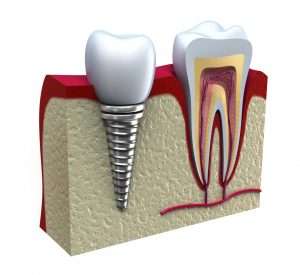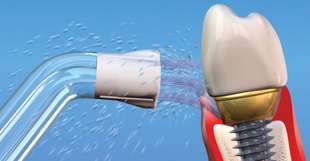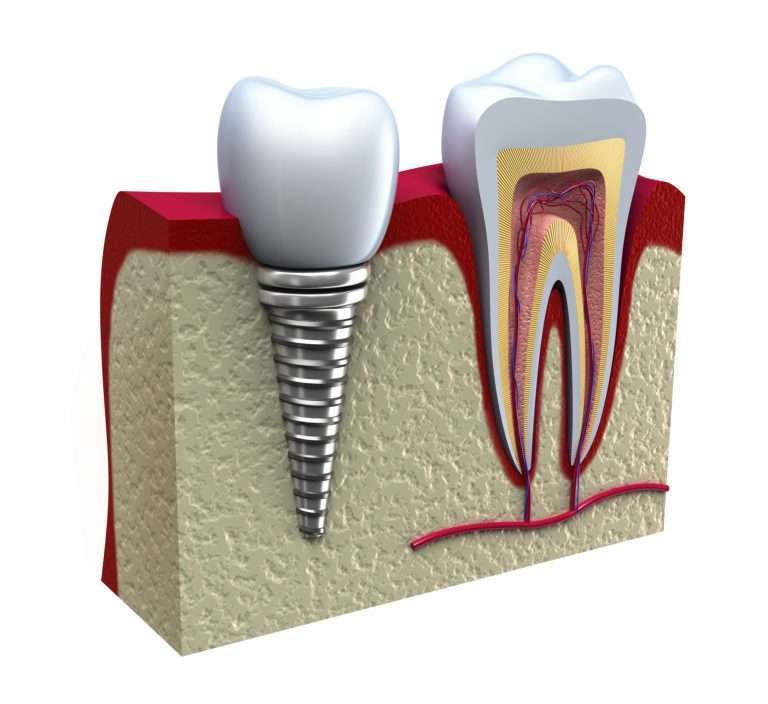
If you’ve recently (or not so recently) had a dental implant placed, it is imperative to take consistent care of the implant so that it lasts in a healthy and viable condition for as long as possible. Following the implant placement and integration period, this state-of-the-art tooth replacement procedure requires regular maintenance through both at-home care and periodic check-ups. When it is properly taken care of, your implant can last your entire life.
At home, make sure to floss around the implant daily to prevent the build-up of bacteria. Furthermore, I recommend at least twice daily brushing of the implant with a soft-bristle brush. If the bacteria is not removed regularly, it may inflame the gum surrounding the implant, leading to peri-implant mucositis, the precursor to peri-implantitis. Peri-implant mucositis is gum inflammation caused by plaque accumulated around the soft tissue. If caught early enough, peri-implant mucositis is treatable and reversible before it begins to affect the hard tissue.
Finally, it is a good idea to be cognizant of any pain, bleeding, unusually bad taste in your mouth even after brushing, or pus. If you notice any of these symptoms, immediately make an appointment with us to get your implant checked, as these could be signs of more serious problems.
Even if you do not notice any unusual symptoms or experience any discomfort, it is still imperative to maintain yearly implant checkups, at minimum. First, your occlusal bite may have shifted; this misalignment of your teeth and jawline places pressure that did not previously exist on your implant every time you bite down. Without an occlusal adjustment, this pressure could cause your implant to become loose.
Furthermore, during your visit I probe the implant site to check for bleeding. If bleeding occurs, that can be a sign of peri-implant mucositis. In addition, careful scaling will be performed to remove biofilm around the implant. If calculus (buildup of hardened, dead dental plaque) has formed, we will eliminate it from the implant site.
Finally, even though you may not experience discomfort in the area at all, an office check may reveal issues that are not apparent to the open eye. For example, there may be pus accumulated under the implant. This pus is usually indicative of an infection such as peri-implantitis which, if left untreated, results in implant failure. If we catch the infection early enough, however, we can place you on an antibiotic, thoroughly clean the area, and if necessary evaluate the next steps that may need to be taken to save the implant.
 To conclude, the implant procedure itself is only the first step in making sure that you maintain the longevity of your implant. The care you take after the implant has been placed is integral to the viability of your implant and to your oral health in general. By maintaining proper oral care, both at home and through periodic office check-ups, you are helping to ensure that your implant lasts for years to come.
To conclude, the implant procedure itself is only the first step in making sure that you maintain the longevity of your implant. The care you take after the implant has been placed is integral to the viability of your implant and to your oral health in general. By maintaining proper oral care, both at home and through periodic office check-ups, you are helping to ensure that your implant lasts for years to come.
Click here to see one of Dr. Singletary’s first implant patients discuss her experience with implant placement here at North Raleigh Periodontics.

For more information on this topic, listen to the Gum Guru Podcast by clicking the link below:
